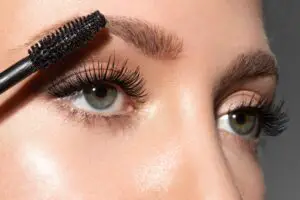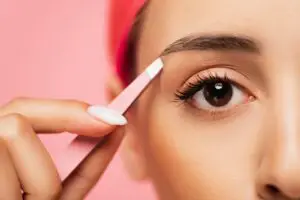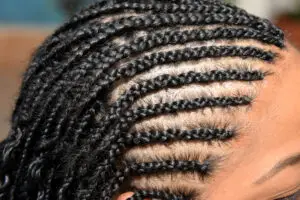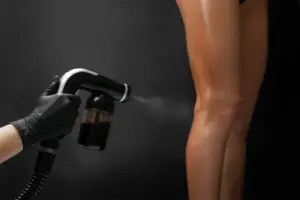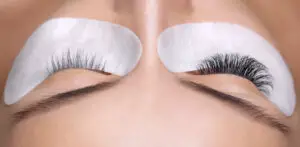The age-old debate of whether one tans faster in water or while laying out is a common subject of interest amongst sunbathers and holidaymakers. It is important to know how to achieve that perfect sun-kissed look while keeping skin health and sun safety in mind.
Various factors play a role in tanning speed and effectiveness, which can vary greatly from one individual to another. Skin type, sun exposure duration, and sun protection measures are some elements that contribute to the tanning process.
Additionally, how light interacts with water and skin can also help explain whether tanning in water or lying out is more effective.
In the next sections, we will delve deeper into these aspects and evaluate their effects on tanning in water versus laying out, providing clarity on this popular tanning topic whilst considering sun protection and safety precautions.
Do You Tan Faster in Water or Laying Out?
Tanning by the pool or ocean might have crossed your mind as you plan your perfect beach day or sunny vacation. The question arises – do you tan faster in water or laying out? The answer seems to vary depending on a few factors, such as your surroundings and the type of water.
It is indeed possible to tan underwater because water doesn’t absorb all the ultraviolet (UV) rays, which means they can still penetrate your skin. Not only that, but light can also reflect off the water onto your skin, enhancing the tanning effect.
However, it’s important to note that the depth of the water can influence the tanning process, with shallower water allowing more UV rays to reach your skin.
Floating on top of a pool or ocean can also help you tan faster. The sun’s rays reflect off the water and onto your skin, leading to more intense exposure compared to when you are lying on a sun lounger. Combining direct sunlight with the reflection from the water will increase your absorption of UV rays.
On the other hand, tanning while laying out is a popular method to catch some sun and achieve a golden brown tan. Doing so ensures direct contact with UV rays from above and may be a better option for people who prefer a more relaxed, controlled approach to tanning.
Bear in mind that the surface you’re lying on can also impact how quickly you tan. For instance, lighter surfaces like sand can reflect the sunlight onto your skin, possibly helping you tan faster than if you were lying on a dark surface that absorbed more sunlight.
In summary, tanning in and around water can help you tan faster due to the reflection of sunlight.
However, laying out on a sun lounger still offers a good amount of direct UV exposure. Either method can be effective, so choose the one that suits your preferences and remember to wear appropriate sunscreen with at least SPF 30 to protect your skin from harmful UV rays while tanning.
Factors Affecting Tanning Speed
There are several factors that can contribute to the speed at which you tan. In this section, we’ll examine three primary factors: sunlight intensity, skin type, and tanning products.
Sunlight Intensity
The intensity of sunlight plays a crucial role in determining how quickly you can tan. During peak sun hours, which are typically between 10 a.m. and 4 p.m., UV radiation is at its strongest, allowing your skin to tan faster. If you are tanning by the water, be aware that the sun’s reflection on the water can result in an even tan.
However, it’s important to remain cautious during these hours, as the risk of sunburn and skin damage increases. Factors like altitude also impact UV radiation levels; at higher altitudes, the atmosphere is thinner, leading to higher UV radiation levels.
Skin Type
Your skin type significantly affects your tanning speed and potential. People with fair skin might tan slower and are more prone to sunburns compared to those with darker skin tones. Darker skin types have more melanin, which offers natural protection against UV radiation, while individuals with fair skin have less melanin. Consequently, they need to be more cautious when exposed to sunlight.
There are six skin types, ranging from very fair (Skin Type I) to very dark (Skin Type VI). Each skin type has a different tanning and burning potential, making it crucial to factor in your skin type when deciding on safe sun exposure times.
Tanning Products
Using tanning products can help speed up the tanning process without compromising safety. These products may include sunscreens with a suitable Sun Protection Factor (SPF), which protects your skin from harmful UV radiation while still allowing some tanning.
[image]Additionally, using sunless tanning products like self-tanners or spray tans is a safer alternative for achieving a tan without extended sun exposure.
Another option is tanning oils, which may contain natural oils and reflect sunlight, accelerating the tanning process. However, it’s essential to use tanning oils in conjunction with a sunblock to safeguard your skin from potential damage. Always follow the manufacturer’s instructions and choose the right tanning product for your skin type and desired tanning results.
Tanning in Water
When it comes to tanning, many wonder whether being in water can make the process faster compared to just laying out under the sun. In this section, we will discuss the effects of tanning in water and the factors involved, such as light refraction and the cooling effect.
Light Refraction
The sunlight reflection from water plays a significant role in tanning while swimming or lounging in the pool. As water reflects and refracts sunlight, more UV rays can reach your skin than when you are on dry land. This increased exposure to sunlight accelerates the tanning process.
However, it is important to note that being submerged in water may somewhat limit your exposure to UV rays since water absorbs some of the sunlight. Thus, for more efficient tanning, consider sunbathing on the surface rather than spending too much time underwater.
Cooling Effect
One reason people might assume that they tan faster in water is because of the cooling effect water has on the skin. When sunbathing on dry land, the heat can become uncomfortable, leading to frequent breaks from the sun. Conversely, being in water keeps the skin cool, allowing for a more extended period of sun exposure without discomfort.
While it may seem counterintuitive, the cooling effect can also serve as a disadvantage, as it can be harder to notice when your skin has been exposed to sunlight for too long. It’s essential to monitor your time spent in the sun and to keep reapplying sunscreen at the recommended intervals.
In conclusion, tanning in water can speed up the tanning process due to factors such as sunlight reflection and the cooling effect it provides. However, be cautious with the cooling effect as it can be deceiving. Always pay attention to your skin and sun exposure time, and remember to use sunscreen to protect yourself from sunburn and potential skin damage.
Laying Out for a Tan
When it comes to getting a tan, many prefer laying out in the sun as it offers a relaxed and comfortable way to achieve a golden hue. In this section, we will discuss how heat absorption and the sweat factor come into play when laying out for a tan.
Heat Absorption
Laying out directly under the sun provides your skin with direct exposure to UV rays, which is the primary source of tanning. The more UV rays your skin absorbs, the faster and deeper your tan will be. When laying out, it is advisable to use a sunscreen with an appropriate SPF to protect your skin from harmful UV rays while still allowing for tanning.
An essential aspect of heat absorption is the surface you’re lying on. If you lay on a darker surface, it will absorb more heat and can help speed up the tanning process. Conversely, if you lay on a lighter surface, it may slow down the tanning process due to lower heat absorption. It is important, however, to be mindful of not overheating and staying hydrated while laying out for a tan.
Sweat Factor
Sweating is a natural process that helps the body cool down when exposed to heat. However, when laying out for a tan, sweating can also play a role in the overall tanning experience. When your body sweats, the moisture on your skin’s surface can act as a natural magnifier for the sun’s rays, potentially accelerating the tanning process.
It is essential to consider the sweat factor when tanning, as excessive sweating can lead to dehydration and might require you to take breaks or seek shade more frequently. Drinking ample water and applying a water-resistant sunscreen can ensure a more pleasant and safe tanning experience while laying out.
Safety Tips for Tanning
While some people prefer to tan out in the sun or submerged in water, it is essential to practice safe tanning habits to protect your skin. Here are a few essential safety tips for tanning.
Sun Protection
Wearing a broad-spectrum sunscreen with an SPF of at least 30 is crucial, regardless of whether you are tanning on land or water. Make sure to apply sunscreen generously and evenly on all exposed skin, including your face, ears, and the back of your neck.
Reapply after swimming or sweating, even if the sunscreen is water-resistant. Excessive sun exposure can lead to sunburn, premature ageing, and an increased risk of skin cancer.
Hydration
Staying well-hydrated is essential when you’re tanning outdoors, as the sun and heat can be dehydrating. Drink plenty of water throughout the day and try to avoid consuming excessive amounts of alcohol, as it can further dehydrate you.
You can also apply a hydrating, cooling mist to your skin for added refreshment.
Time Limitation
Avoid spending too much time in direct sunlight, especially during the hottest hours of the day (between 10 AM and 4 PM), when UV radiation is at its highest. Set time limits for tanning sessions or seek shade intermittently to give your skin a break from the sun’s rays.
Remember that multiple short tanning sessions are better than one long session, as this reduces the risk of sunburn and allows your skin to recover between sessions.
Conclusion
It can be said that tanning faster depends on the environment one chooses to tan in. Floating on top of the pool can help you tan faster, as the sun’s rays reflect off of water and onto your skin, resulting in more intense exposure. In contrast, laying out in the sun provides lesser intensity of exposure.
However, it is crucial to understand that tanning, no matter how quickly, still carries risks, such as developing skin cancer due to harmful UV rays. To protect yourself, make sure to follow safety tips and precautions. These include applying appropriate sunblock, avoiding peak sun hours, and monitoring your exposure time outdoors.
By considering these factors and taking necessary measures, you can ensure a safer tanning experience, whether you choose to do it in water or while laying out.

I’m Jennifer a beauty and wellness expert. I believe in promoting a sustainable and healthy lifestyle from within. Helping people feel good is my passion; whether it’s teaching yoga or offering skincare advice.


